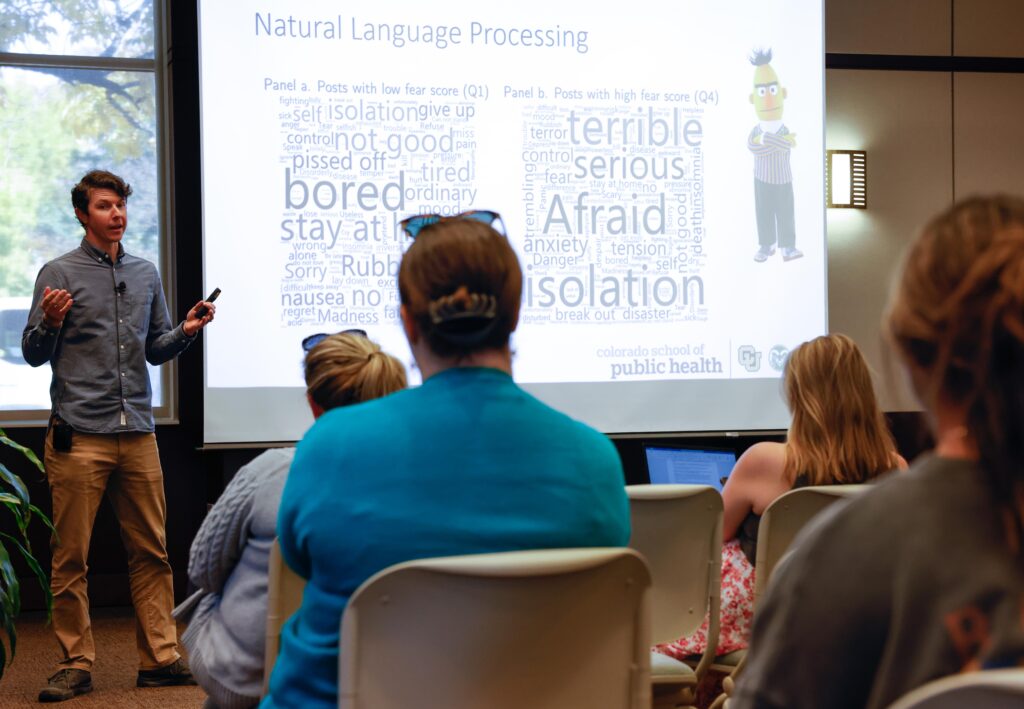Recap: Economics and Epidemiology
News and Events

Recap of Dr. Jude Bayham’s Economics and Epidemiology
Even before the COVID-19 pandemic, epidemics and health crises affected the economy. The COVID-19 pandemic, however, brought the connection between public health and the economy to the forefront.
On November 3, Jude Bayham, an environmental and resource economist and associate professor at Colorado State University, spoke about the role economics can play in modeling epidemics, the integration of those models and why it can help us understand and improve our modeling.
Speaking in connection with One Health Day, a campaign that recognizes that health issues must be addressed cohesively instead of independently, Bayham first explained the basis of infectious disease models as the Compartmental Model. This model divides the group into three categories: susceptible, infective, and removed. The susceptible include those who can get the disease; the infective includes those who have it; and the removed are those who have either died or become immune.
The problem with the Compartmental Model is that it doesn’t show how humans behave; instead, it models human behavior more like particles that randomly bounce among each other. According to Bayham, it is a good model, one that is usable, but to account for human behavior, different modeling is needed.
Modeling that shows the risk and reward tradeoffs of human behavior can better account for what is called the avoidance behavior within an infected population. It is the idea that people included in the model are making decisions about risks when infection increases.
To test these theories, Bayham looked at data during the Swine Flu outbreak for a pandemic setting and times of high cases of Lyme disease in a non-pandemic setting. He then took his research and applied it to the connection between voluntary avoidance behavior and policy-induced avoidance behavior with COVID-19.
During the Swine Flu outbreak, research found that people conducted avoidance behavior, which prevented the pandemic from being worse. For Bayham’s research with Lyme Disease, they looked at the question of whether people avoided outdoor recreation to avoid the disease in areas where cases were high. Data showed an estimated $2-5 billion economic value from lost recreation.
To disentangle the data during the Covid pandemic, the question became how much researchers attribute to policy and how much to people’s voluntary behavior. Data showed evidence of voluntary behavioral response before the stay-at-home orders at a time that was close to the declaration of the emergency order. The data also showed that the policy had a clear effect too. Looking at a national study, in some counties in the U.S., the stay-at-home orders made a significant difference in the spreading of the epidemic, suggesting a significant number of cases in a county would have been needed to induce the same kind of response. The implication of this research is that the accurate attribution of behavioral response to policy is important for benefit-cost analysis.
Moving forward, Bayham hopes that more look to an empirical research approach to understand the voluntary response to understanding disease risk. If researchers don’t account for this behavior, they risk overattributing a policy’s effect.
Bayham made the point that public health and the economy are tied together, and that is how research needs to view them. “You really can’t have a functional economy when people perceive a high risk of infection,” he commented. Understanding these connections makes it easier to predict the magnitude of avoidance behavior and therefore develop a policy that addresses that behavior.
